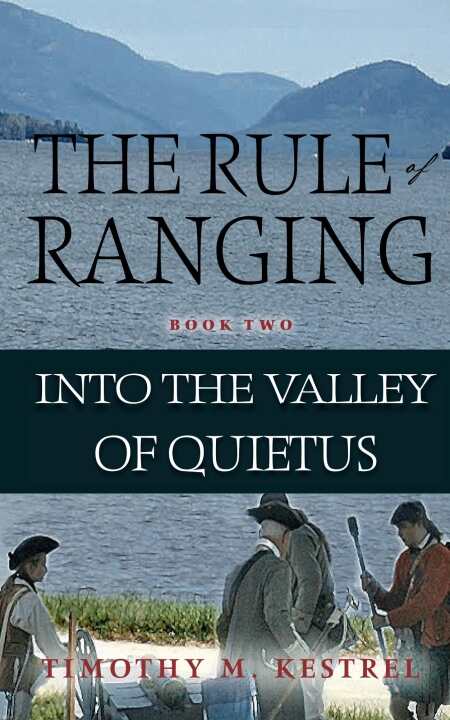
The Rule of Ranging 2
Into the Valley of Quietus
Kestrel uses a cinematic approach to showcase the setting, engaging all the senses in this historical novel.
The 1750s were a turbulent time, especially for someone like Finn, a member of the Roger Rangers who has some growing to do. In The Rule of Ranging: Into the Valley of Quietus, the second book in his series, Timothy M. Kestrel shares the struggles of the time period—the fighting and positioning between countries and cultures—providing an insightful look into the lives, desires, and dreams of the men fighting to protect their people.
Finn is an old man when Henry Raymond, a reporter from the New York Daily Times, talks to him about his experiences as a ranger. Over dinner, Finn shares his struggles during a time when he and the other Roger Rangers fought and stood guard in the frontier land between Pennsylvania and Nova Scotia—a time when France and Great Britain were fighting for position, disrupting the lives of the near-starving local settlers in the midst of their battles. As a ranger, Finn worked with the men in his group to protect the tender beginnings of America while also trying to balance his own internal struggles. In the end, Finn learns an important piece of information about his past and finds the strength to let go and step forward.
From the first paragraph, Kestrel uses a cinematic approach to showcase the setting, engaging all the senses: “Henry Raymond noticed the velvety softness of the man’s green smoking jacket as he assisted him toward the sumptuous dining room with banquet rooms in the back.”
Although Kestrel has a way with setting a scene, there are a few issues with point of view. First, the story is based on Finn relating his story to the reporter, but sometimes the perspective changes to other characters who share their experiences. Those characters stray from Finn’s telling of the story, creating illogical shifts. The point of view can change frequently within scenes, too, creating some confusion about who is telling the story.
Another inconsistency is that the language is modern and does not reflect the nuances of the 1750s. This does not detract from the overall story, but it does make it challenging to remember that the events do not occur in recent history.
Despite these issues, Kestrel creates an interesting story about a time not often explored in literature. His characters are worth cheering for, creating the tension and urgency that keeps the story moving forward. The Rule of Ranging 2: Into the Valley of Quietus is a mostly well-paced story with relatable characters.
Reviewed by
Kandy Alameda
Disclosure: This article is not an endorsement, but a review. The publisher of this book provided free copies of the book and paid a small fee to have their book reviewed by a professional reviewer. Foreword Reviews and Clarion Reviews make no guarantee that the publisher will receive a positive review. Foreword Magazine, Inc. is disclosing this in accordance with the Federal Trade Commission’s 16 CFR, Part 255.
